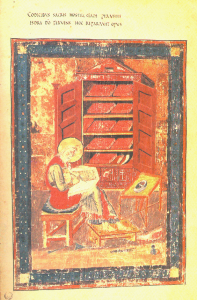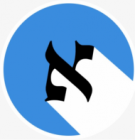At the end of the Second Temple Period, a new religious institution emerged among the Jews who lived in the Land of Israel – the synagogue (‘Bet Kenesset’ {בית כנסת} in Hebrew).
Ezra the Scribe (‘Ezra Ha-Sofer’ {עזרא הסופר} in Hebrew), who lived in the 5th century BC, already established the public Torah reading, and by doing this, laid the foundations of the liturgical text in Judaism. The liturgical text would later evolve into a rich, poetic, and spiritual culture that is a well-defined unit within the development of the Hebrew language.

The Jewish blessings, prayers, and poems are written in this Hebrew. This is the Hebrew that was spoken during the first and second centuries (at that time, both Aramaic and Hebrew were used as the vernaculars of the Jews). The new reality that characterized the Jewish world after the destruction of the Second Temple (at the second half of the first century CE) gave rise to a new codex of laws and regulations called the ‘Mishnah’ {משנה} (derived from the Hebrew verb ‘Le-Shanen,’ {לשנן} which means ‘to memorize’ and implies the unique way of studying in the Jewish culture of that time).
The ‘Mishnah’ is considered to be the very foundation of the Oral Rabbinic Jewish Law – also known as ‘Halachah’ {הלכה} (derived from the Hebrew verb ‘La-lechet’ {ללכת} which means ‘to walk’ and symbolizes ‘walking on the right path’) – and it is the last Jewish canonical text that was ever written during the time Hebrew was still used as both the native and vernacular language of the Jews in the land of Israel (composed around the year 220 CE).
The Hebrew of the ‘Mishnah’ represents a new phase in the development of the language and in some parts it is different than Biblical Hebrew in its grammar, syntax, vocabulary and even spelling!
